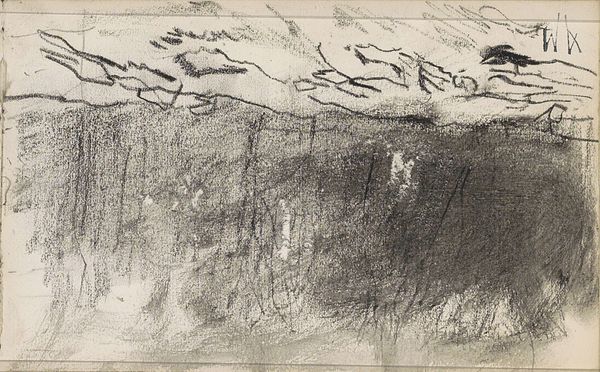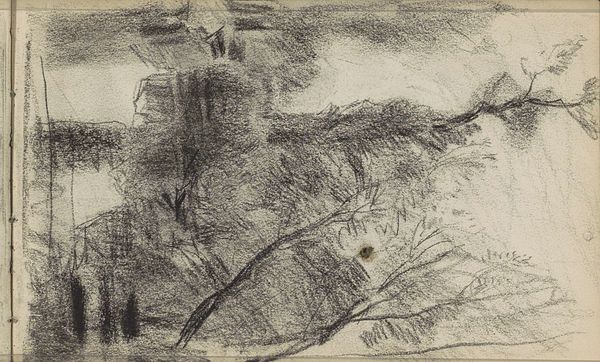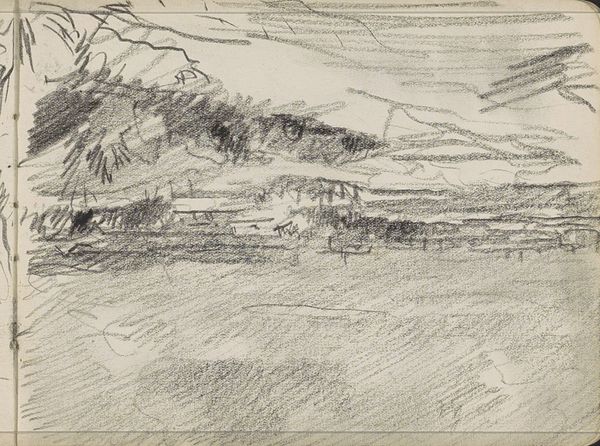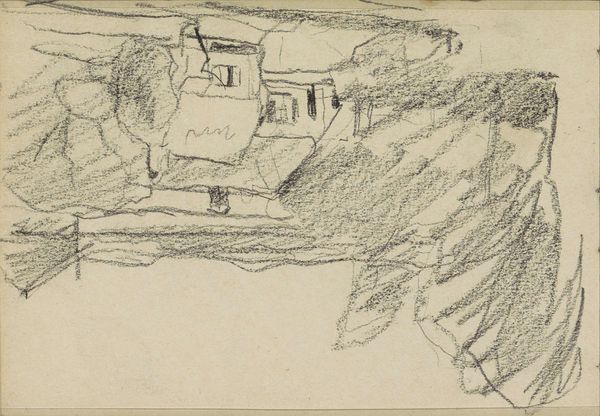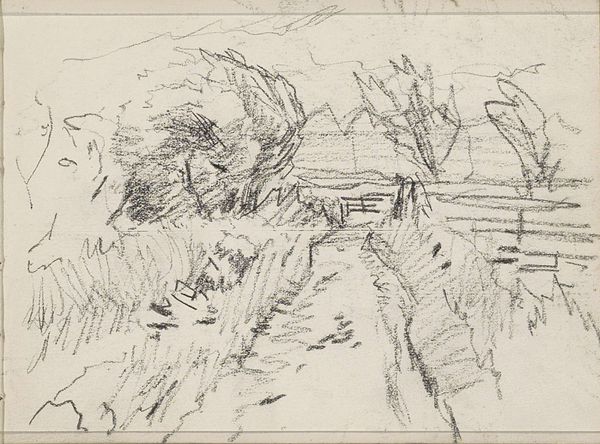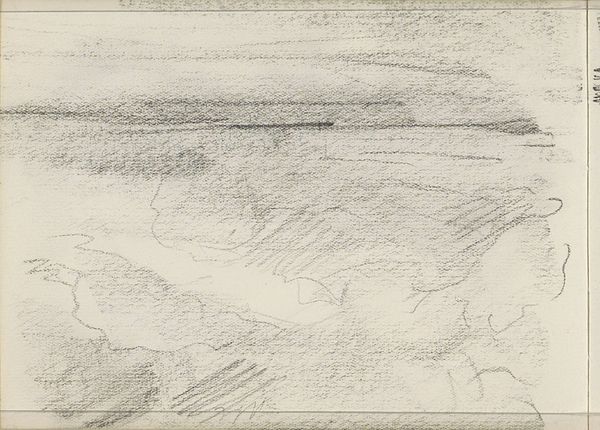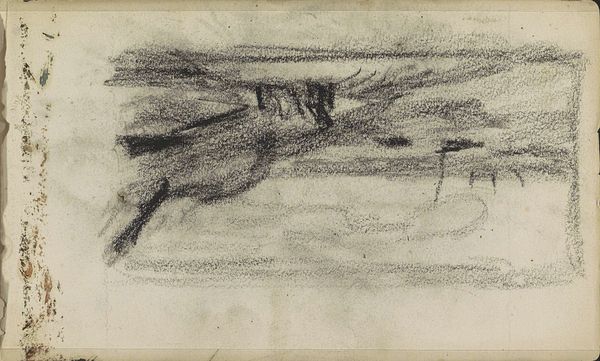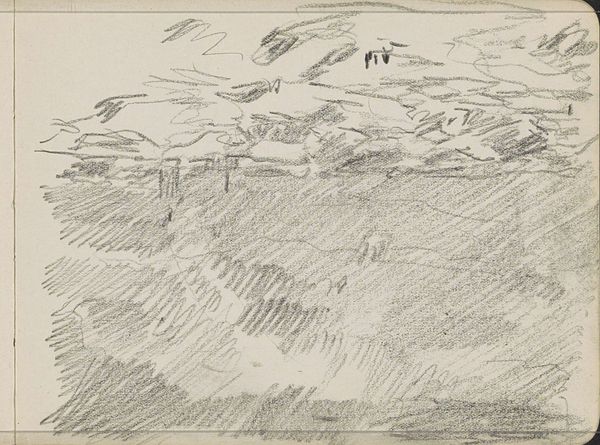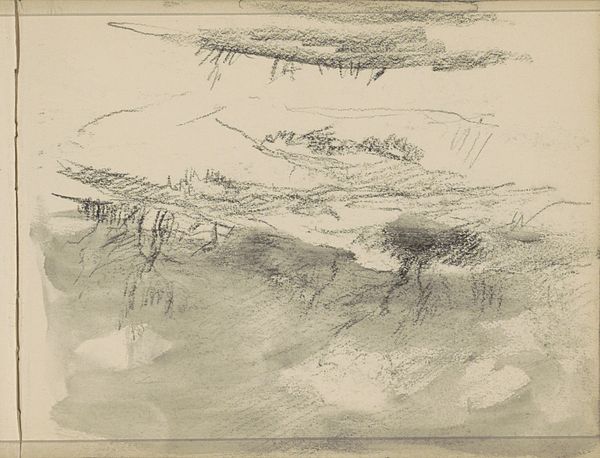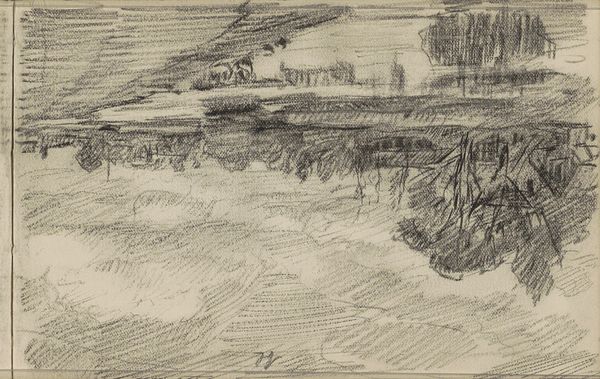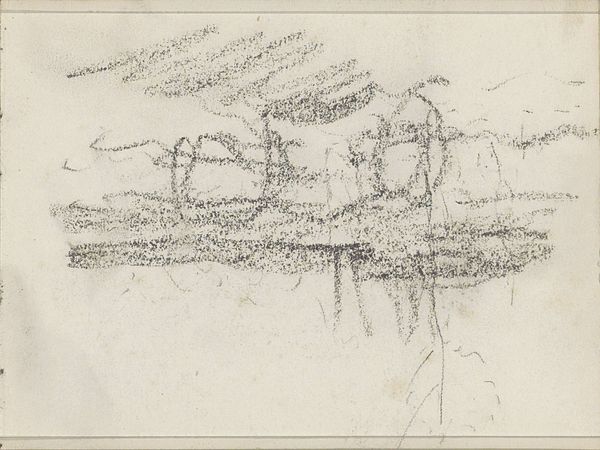
Gezicht op de Oude Schans met de Montelbaanstoren te Amsterdam c. 1887 - 1897
0:00
0:00
willemwitsen
Rijksmuseum
Copyright: Rijks Museum: Open Domain
Curator: Willem Witsen created this cityscape, “View of the Oude Schans with the Montelbaanstoren in Amsterdam,” using pencil on paper around 1887 to 1897. Editor: It has such a transient quality! The sketchy, almost hesitant lines create a real sense of fleeting observation. It's not just a city; it’s a momentary impression of a city. Curator: Precisely! The impressionistic style serves to explore the modern, changing urban experience of Amsterdam during the late 19th century, as Witsen moved among artistic and intellectual circles. The choice of a pencil drawing feels significant. It bypasses the established history of painting and embraces a quick, accessible medium, making it possible for Witsen to be responsive to the rapidly shifting social landscape. Editor: Absolutely. And look at the material economy of a pencil sketch – the reliance on easily acquired materials reflects the artist's interaction with his environment. Pencil facilitates this urban exploration, the direct inscription of observed reality. I see labor and observation made immediate, and then reproduced and consumed. What narrative do you find suggested here? Curator: Witsen here presents a silent witness, almost. This wasn't necessarily about the grand narrative of national pride; it shows a quiet assimilation and representation of everyday life within a transforming capitalist hub. We have to remember that Witsen came from a privileged background, part of the elite who also had radical, progressive ideas. I wonder if the loose, sketchy technique acts almost like a refusal of that formal rigidity he might have rejected in his own upbringing. Editor: I am sure this informed his decisions. Even just this act of selecting and using commonplace materials opens it up. Curator: I agree, which goes against the traditionally upheld boundaries between the academy and everyday culture, between luxury and necessity. The way this connects to modern art movements later on feels palpable. Editor: Ultimately, it's a dialogue between material simplicity and the evolving cityscape—Witsen provides a tangible link between place, production, and perspective. Curator: It offers an entry point into broader questions about how the physical landscape of the city is both reflected and shaped by the social and material conditions of its inhabitants, prompting viewers to confront notions of history, class, and urban change.
Comments
No comments
Be the first to comment and join the conversation on the ultimate creative platform.
